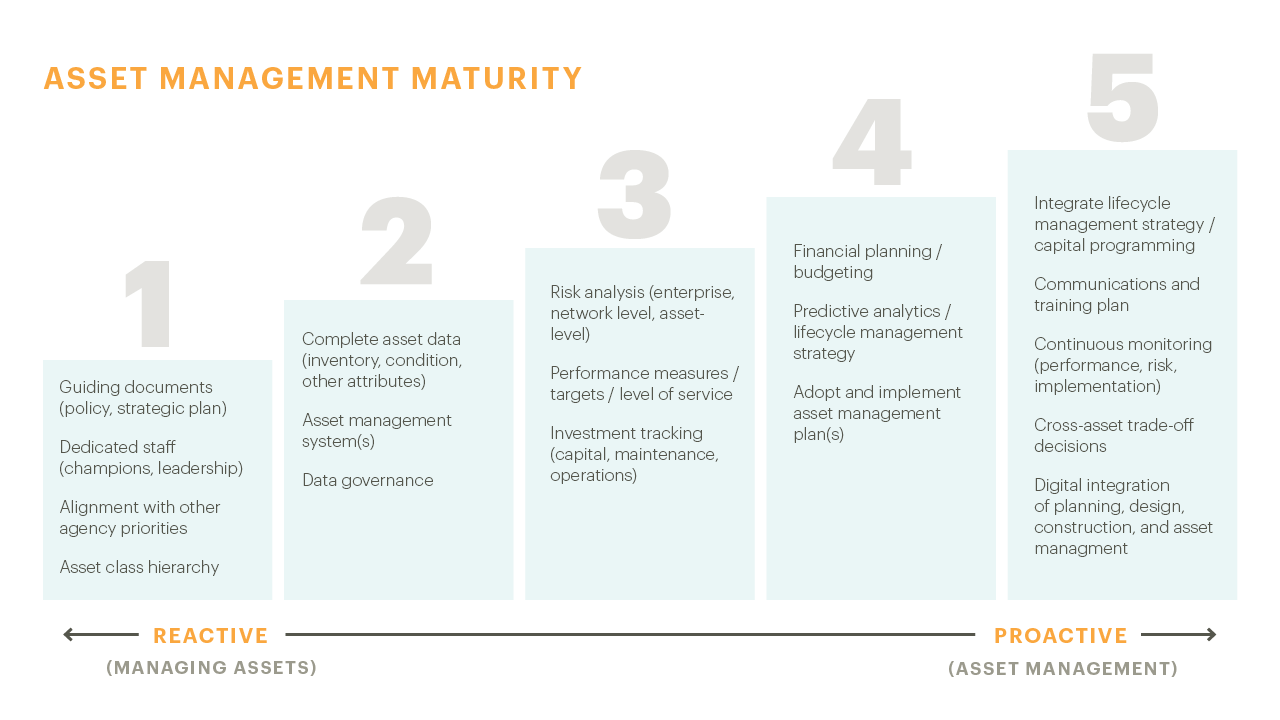Infrastructure asset management is an actionable, lifecycle planning strategy that helps agencies minimize the total cost of ownership, increase asset reliability and extract value from critical and natural infrastructures, such as roads, bridges, energy, and parks. WSB firmly believes asset management is most effective and innovative when discussions happen across an agency. To maximize these conversations, WSB helps clients navigate the asset management process, create strategic plans, implement technology, and identify risk areas. The collaborative process develops a platform to communicate funding needs and the technical tools and planning to optimize those investments.
Government or commercial clients that own infrastructure assets can benefit from asset management practices. When a client is on their asset management journey, WSB evaluates their current state of practice and finds improvement opportunities.
Experience
Our experience as both consultants and asset owners will provide a clear path to successfully implementing asset management policies, strategies, and plans. Over the past 20 years, WSB has worked with various cities, counties, and state governments to develop asset management products.
Background in Technology
Our team utilizes advanced data collection, extraction, and modeling technologies. WSB implemented numerous Enterprise Asset Management Systems (EAMS) in a diverse set of organizations. We recognize the importance of planning and assessing needs to drive technology decisions.
Full-Service Firm
Our team of asset management experts, public works operations leaders and technologists provide a full service that can respond to any asset management goal. Whether the project is to write an asset management policy or establish a comprehensive EAMS, WSB has the team and resources to reach your goals.









We partner with our clients and communities to build what’s next in infrastructure—the places, spaces and systems that support our lives.